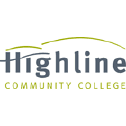What do they do?
Monitor the health status of an individual with disabilities or illness, and address their health-related needs, such as changing bandages, dressing wounds, or administering medication. Work is performed under the direction of offsite or intermittent onsite licensed nursing staff. Provide assistance with routine healthcare tasks or activities of daily living, such as feeding, bathing, toileting, or ambulation. May also help with tasks such as preparing meals, doing light housekeeping, and doing laundry depending on the patient's abilities.
Also known as:
Caregiver, Certified Home Health Aide (CHHA), Certified Medical Aide (CMA), Certified Nurses Aide (CNA), Direct Care Professional, Direct Support Professional (DSP), Habilitation Training Specialist, Home Attendant, Home Care Aide, Home Health Aide (HHA), Home Health Provider, Home Hospice Aide, Hospice Aide, In Home Caregiver, Residential Assistant (RA), Residential Counselor
-
13.1%
Change
Ranks #50 in job growth rate16,220Job Openings
Ranks #9 in net job growth
Looking for colleges that offer a specific major? Use the College Match Tool to find your best-matched schools and discover your estimated Net Price!
People in this career often have these skills:
- Active Listening - Giving full attention to what other people are saying, taking time to understand the points being made, asking questions as appropriate, and not interrupting at inappropriate times.
- Service Orientation - Actively looking for ways to help people.
- Social Perceptiveness - Being aware of others' reactions and understanding why they react as they do.
- Critical Thinking - Using logic and reasoning to identify the strengths and weaknesses of alternative solutions, conclusions, or approaches to problems.
People in this career often know a lot about:
- Customer and Personal Service - Knowledge of principles and processes for providing customer and personal services. This includes customer needs assessment, meeting quality standards for services, and evaluation of customer satisfaction.
- English Language - Knowledge of the structure and content of the English language including the meaning and spelling of words, and rules of composition and grammar.
People in this career often have talent in:
- Oral Expression - The ability to communicate information and ideas in speaking so others will understand.
- Oral Comprehension - The ability to listen to and understand information and ideas presented through spoken words and sentences.
- Problem Sensitivity - The ability to tell when something is wrong or is likely to go wrong. It does not involve solving the problem, only recognizing that there is a problem.
- Near Vision - The ability to see details at close range (within a few feet of the observer).
- Inductive Reasoning - The ability to combine pieces of information to form general rules or conclusions (includes finding a relationship among seemingly unrelated events).
People in this career often do these activities:
- Maintain medical records.
- Assist patients with daily activities.
- Give medications or immunizations.
- Engage patients in exercises or activities.
- Feed patients.
- Assess physical conditions of patients to aid in diagnosis or treatment.
- Teach basic living or other adaptive skills to patients or caregivers.
- Accompany patients or clients on outings to provide assistance.
- Apply bandages, dressings, or splints.
- Administer therapy treatments to patients using hands or physical treatment aids.
This page includes data from:

 Occupation statistics: USDOL U.S. Bureau of Labor Statistics Occupational Employment Statistics
Occupation statistics: USDOL U.S. Bureau of Labor Statistics Occupational Employment Statistics





